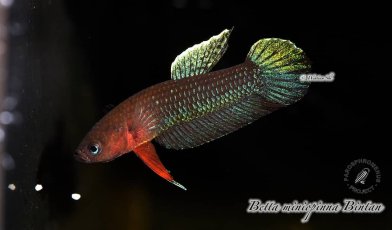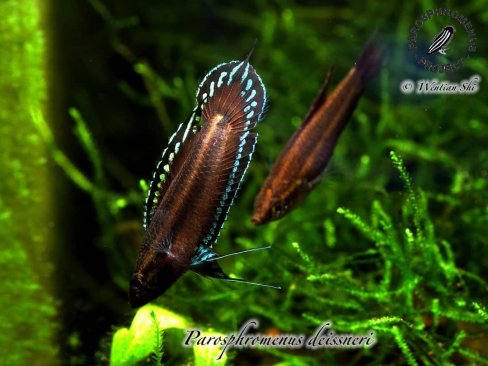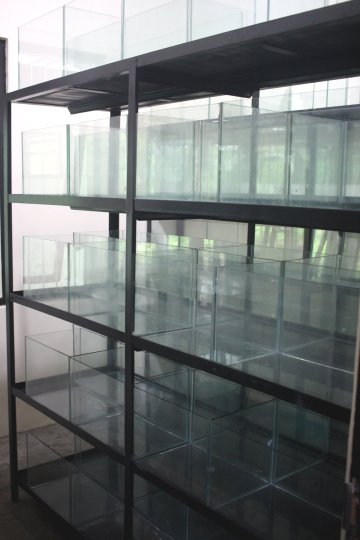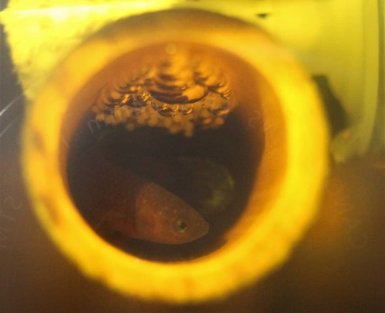With kind permission from the PCBA we here publish an article, which can be found on the homepage of PCBA. We follow the endavours of the PCBA and the conservation of the indonesian species of parosphromenus with close and warm interest, and will continue to support their work, whenever possible.
That efforts such as PCBA exists, and care for the parospromenus species — as well as other blackwater species — is of very big importance.
The conservation effort for blackwater fish by PCBA
By adyah ningtyas– April 2021
Indonesia is home to the biggest area of peat swamp forests in the world. The forests are widely spread in Sumatra and Borneo. The floor of these forests is moist saturated soil that is called peat. It is an acidic layer that is made of dead leaves, woods and other organic matters that do not decompose fully. To form a stable peat forest takes thousands of years. Unfortunately, it has been threatened by development and economic drive as many of Indonesia’s peat swamp forests have been turned into industrial forests and monoculture plantations, such as palm oil plantations.
Another threat to these forests comes in the form of uncontainable wildfire. Considering the composition of the peat forest that contains a high amount of organic material, a small fire can be a big disaster. Fire can remain underneath the surface for a long period of time turning the fertile ground into a wasteland. The recent irresponsible anthropogenic causes only further instigate the fire and speed up the land devastation.
Meanwhile, peatland forests play a critical role in the carbon cycle. The amount of the organic material that is accumulated in the peat layer allows peat swamp forest to store a significant amount of carbon. Once it is logged and eradicated, the amount of carbon released into the atmosphere vaults up. This speeds up global warming and triggers climate change as we have been experiencing today. Apart from its global effect, the loss of peat swamp forest also affects the organism in its locality.
Inside the peatland forests strives an unparalleled ecosystem that cannot be easily recreated. During the rainy season, the floor of the forest is flooded for several months. The water remains even during the dry season, forming long term shallow ponds with soft acidic freshwater. On the appearance, the water is of stained brown colour owing to the tannins leaching from dead leaves and other organic matters, including the peat itself. This colour earns its name, blackwater.
Blackwater is unique in composition. This water is formed by rainwater with very little mineral content resulting in very low conductivity. Blackwater is also very low in pH, around 2.9 to 5.5. These make the blackwater pond also a unique ecosystem. Many organisms make it their home. Some of those organisms are native Betta and Parosphromenus fish. Since the ponds in one area of the forest may have a completely different ecosystem from the ones around it, they can have different species of fish. A river, a hill or just a slightly bigger stream of fresh basal water can act as a geographical boundary that hinders species to meet one another. In some cases, the species on one side of a river is completely different from the one on the other side.
Considering the high singularity of the ponds in each area, habitat loss in one area as above mentioned may irreversibly eradicate the whole remaining fish species. With this in mind, PCBA, with the expert support from the Parosphromenus Project, is committing its power to conserve Indonesia’s endangered blackwater fish species. Currently, we have a fish room containing 75 tanks of various sizes that are dedicated to conservation breeding of those fish. At present, PCBA cares for several species of both Parosphromenus and Betta. Its priority includes:
- P. ornaticauda
- P. deissneri
- P. bintan
- P. sp Jambi/Tangkit
- B. burdigala
- B. rutilans
- B. spilotogena
- B. mandor
- B. miniopinna
These fish are among Endangered (EN) and Critically Endangered (CR). PCBA acquires the founding individuals from the local highly threatened ponds in the vicinity of palm oil plantation and or industrial forest. Coming from extremely soft and acidic water in their natural habitat, it took around the clock observation to set up a suitable water environment. To recreate the perfect natural habitat in the peat swamp forest was a real challenge. It also requires total dedication to ensure the breeding success of the fish. Nevertheless, the diligence of the team resulted in applaudable development in fish species conservation. In PCBA’s fish room, the fish have incredibly developed their population. Today, most of these species have spawned and many of the fry are free-swimming and independent.
In the planning stage of our endeavour in conservation breeding of Indonesia’s blackwater fish, the Parosphromenus Project (PP) played a vital role. In May 2020, Jochen Menner of PCBA contacted PP for the first time and received a warm response and an offer of experience and expertise in setting up PCBA’s fish room. It was Wentian Shi who replied to the email. Since then, Wentian Shi, as well as Yuhan Ji, has been PP’s representatives to guide PCBA through the initial planning of the fish room. He has been the one who suggested the fish tank sizes and the species to keep. He has also offered help in the acquisition of founding individuals.
Custom sized aquaria
In December 2020, PCBA ordered the aquaria from a local maker with the sizes that have been recommended by PP. Some sizes were adjusted after a few consideration. The aquaria were set up in the fish room not too long after that. By this stage, PCBA had considered a few options in regard to filtration and air supply and it was decided to work with simple air-powered sponge filters. The adjustment to the water parameter as mentioned above followed after that.
Installed aquaria
Due to, the COVID-19 restriction applied in the immigration law, the plan of integrating Wentian Shi into the initial preparation had to be adjusted. We acquired the fish from some local sources and continue with the conservation breeding plan without the physical presence of PP. However, the support in knowledge and expertise from the Parosphromenus Project continues.
Betta minniopinna guarding the nest
To learn more about this blackwater fish project, please see this website prigenark.com.






